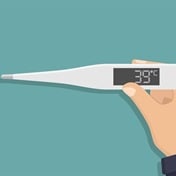
Alternative names
Cardiac catheterisation
What are the indications?
A coronary angiogram is basically an X-ray photograph of the heart's arteries to look for blockages. It should NOT be done to diagnose coronary artery disease (CAD) in a stable patient, as this is notoriously inaccurate in the absence of other evidence indicating significant CAD. The diagnosis should be fairly certain if the patient has typical symptoms, and after tests like ECG, exercise ECG, cardiac nuclear scan, Dobutamine stress echo, or CT-angiogram. Then a coronary angiogram is a very good procedure to confirm the diagnosis, but more importantly to plan treatment and to enable possible percutaneous coronary intervention (PCI) – see below – in the same setting.
In the setting of an acute heart attack it is an excellent emergency test to do, as one can then open the blocked artery very rapidly with a high chance of limiting the amount of permanent damage.
How is it done?
Access to the arteries can be obtained via the artery in the groin, the elbow, or the wrist. It is done under local anaesthesia. The local anaesthesia will sting for a minute or so, but after this the procedure should be painless. Through the needle puncture a sheath is inserted, and through the sheath one can then pass the catheters (long plastic pipes). They are passed to the heart where pressure measurements can be made, and the two main arteries supplying the heart muscle can be injected with dye. X-ray is used to film these injections. Sometimes the patient may experience hot flushes or palpitations, but this is usually very short-lived. Possible treatments may then include:
- If no/minimal narrowings are seen, alternative diagnoses should be sought
- A simple narrowing can be opened via PCI (see below)
- Coronary bypass surgery may be necessary if the narrowings are more widespread
PCI can sometimes be performed immediately and through the same catheters. It entails passage of either a balloon catheter (percutaneous transluminal coronary angioplasty / PTCA) or a balloon catheter with a metal stent crimped over the narrowing. The balloon is then inflated for a few seconds to stretch open the narrowing. When a stent procedure is done, the stent remains expanded in the vessel and the balloon is removed. The choice between PTCA and stenting is made on a number of technical factors, but stents are generally less prone to later closure than PTCA alone.
After a stenting procedure it is vital that the patient remains on blood thinning treatment for at least a month (sometimes up to 12months).
The sheath that goes into the artery may be removed immediately or a few hours later (if blood thinning medicine was used). To prevent it from bleeding, firm manual compression is applied to the site of the puncture.
How should I prepare?
Most doctors prefer to keep their patients starved before the angiogram. A nurse may shave the groin area and in most cases a sedative is given before the procedure.
Risks
- Some people are allergic to the iodine in the contrast material (dye) injected. This is associated with allergy to shellfish. Allergic reactions are all potentially dangerous, but all catheter laboratories should have the medicine to treat this readily available.
- Damage to the artery where the puncture was done is possible. This could (rarely) lead to reduced blood flow to the limb, necessitating an operation, or (worst scenario) loss of the limb.
- PCI can lead to damage to the arteries of the heart and rarely even a heart attack. This may (worst scenario) require emergency bypass surgery. Fortunately this is hardly ever necessary these days.




 Publications
Publications
 Partners
Partners















